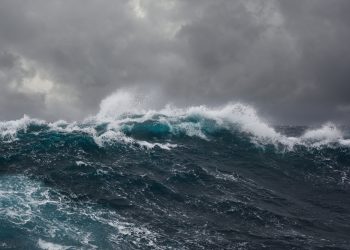Extreme weather events are becoming more likely
The world’s climate is not only continuing to warm, it’s adding heat-trapping greenhouse gases even faster than in the past, researchers said Tuesday.
Indeed, the global temperature has been warmer than the 20th century average every month for more than 25 years, they said at a teleconference.
“The indicators show unequivocally that the world continues to warm,” Thomas R. Karl, director of the National Climatic Data Center, said in releasing the annual State of the Climate report for 2010.

“There is a clear and unmistakable signal from the top of the atmosphere to the depths of the oceans,” added Peter Thorne of the Cooperative Institute for Climate and Satellites, North Carolina State University.
Carbon dioxide increased by 2.60 parts per million in the atmosphere in 2010, which is more than the average annual increase seen from 1980-2010, Karl added. Carbon dioxide is the major greenhouse gas accumulating in the air that atmospheric scientists blame for warming the climate.
The warmer conditions are consistent with events such as heat waves and extreme rainfall, Karl said at a teleconference. However, it is more difficult to make a direct connection with things like tornado outbreaks, he said.
“Any single weather event is driven by a number of factors, from local conditions to global climate patterns and trends. Climate change is one of these,” he said. “It is very likely that large-scale changes in climate, such as increased moisture in the atmosphere and warming temperatures, have influenced – and will continue to influence – many different types of extreme events, such as heavy rainfall, flooding, heat waves and droughts.
The report, being published by the American Meteorological Society, lists 2010 as tied with 2005 for the warmest year on record, according to studies by the National Oceanic and Atmospheric Administration and NASA. A separate analysis, done in Britain, lists 2010 as second warmest.
Deke Arndt, chief of the Climate Monitoring Branch at NCDC, noted that every month since early 1985 has been warmer than the 20th century average for the month.
Even more willing to attribute extreme weather events to climate change were speakers at a second briefing organized by the Pew Center on Climate Change.
“Scientists have concluded just recently that the link between climate change and extreme weather is not so much theoretical anymore as it is observational,” Fred Guterl , executive editor of Scientific American magazine, said at that teleconference.
“Climate change is a risk factor for extreme weather just as eating salty foods is a risk factor for heart disease,” said Jay Gulledge, director of the Science & Impacts Program at the Pew Center. “That doesn’t mean we can predict the next flood in Iowa or drought in Georgia … but it means they are more likely.”
Meanwhile, a separate report from the Cooperative Institute for Research in Environmental Sciences at the University of Colorado at Boulder said the Earth is getting thicker around the middle due to ice loss from the Greenland and Antarctic ice sheets. “If you imagine the Earth is like a soccer ball and you push down on the North Pole, it would bulge out at its ‘equator,'” said CIRES fellow Steve Nerem, co-author of the study.
At the NOAA briefing, Karl added that the Greenland ice sheet lost more mass last year than any year in the last decade. Melting of the land-based ice sheets in places like Greenland, Antarctica and other regions has raised concerns about rising sea levels worldwide.
“The arctic is changing faster that most of the rest of the world,” added Walt Meier, a research scientist at the National Snow and Ice Data Center, University of Colorado. “This has long been expected.” In addition, he said, the September Arctic sea ice extent was the third smallest in 30 years, older, thicker sea ice is disappearing, there is a shorter duration of snow cover, and the permafrost is melting.
Thorne added that the conclusion that the earth is warming does not rest on a single type of data.
The 2010 report adds information on lake surfaces and permafrost temperatures for the first time, bringing the total number of climate indicators considered to 41. The report involved 368 researchers from 45 countries.
Other findings of the report:
_Alpine glaciers shrank for the 20th consecutive year.
_Even with a moderate-to-strong La Nina during the latter half of the year, which is associated with cooler equatorial waters in the tropical Pacific, the 2010 average global sea surface temperature was third warmest on record and sea level continued to rise.
_Oceans were saltier than average in areas of high evaporation and fresher than average in areas of high precipitation, suggesting that the water cycle is intensifying.
_A strong warm El Nino climate pattern at the beginning of 2010 transitioned to a cool La Nina by July, contributing to some unusual weather patterns around the world and impacting global regions in different ways.
_Tropical cyclone activity was below normal in nearly all basins around the globe, especially in much of the Pacific Ocean. The Atlantic basin was the exception, with near-record high North Atlantic basin hurricane activity.
_Heavy rains led to a record wet spring (September to November) in Australia, ending a decade-long drought.
_The Arctic Oscillation affected large parts of the Northern Hemisphere causing frigid arctic air to plunge southward and warm air to surge northward. Canada had its warmest year on record while Britain had its coldest winter at the beginning of the year and coldest December at the end of the year.
_An atmospheric pattern related to the strength and persistence of the storm track circling the Antarctic led to an all-time maximum in 2010 of average sea ice volume in the Antarctic.
Source: Huffington Post





























































